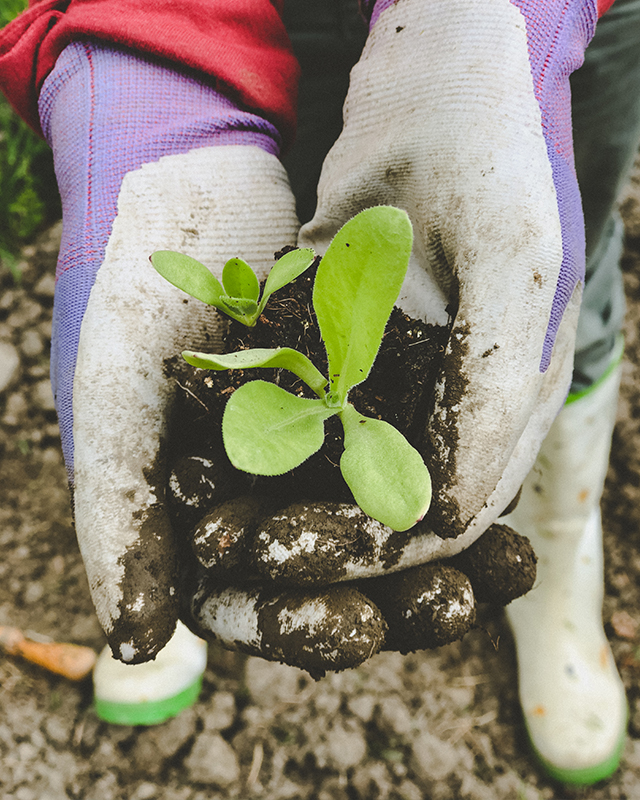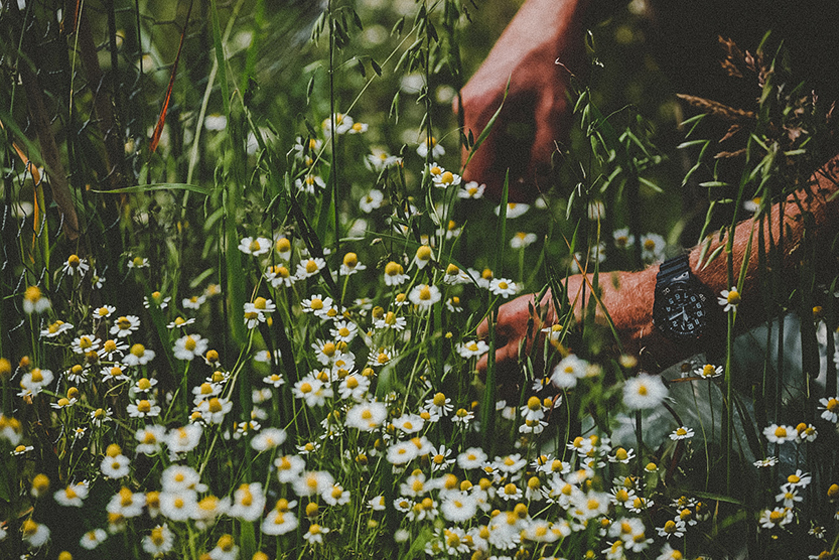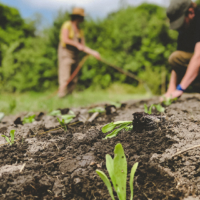 Photo: Weleda AG
Photo: Weleda AG
“Biodiversity is essential for life” is the core message of the EU Biodiversity Strategy for 2030, which was adopted by the European Commission in May 2020. Its ambitious objective is to put Europe’s biodiversity on a path to recovery. In order to do so, one of its main actions will be to restore degraded ecosystems on land across Europe by increasing organic farming, which provides healthy food, increases soil fertility and biodiversity and reduces the footprint of food production. At least 25% of the EU’s agricultural land must be organically farmed by 2030. Many NATRUE members and label users already actively contribute to achieving this percentage through the biodynamic and organic cultivation of the plants and fruits whose extracts and derivates they use in the formulation of their natural and organic cosmetic products.
How do biodynamic agriculture and organic farming contribute to biodiversity protection and land restoration? We have asked the expert Claire Hattersley, Weleda UK’s Garden Manager for over 20 years.
Why organic farming is better for the planet
Organic farming is an agricultural method in which natural substances and processes are used to produce food, plants and flowers. Unlike intensive farming, organic agriculture is characterized by its positive impact on soil health and fertility, which contributes to preserving the ecological balance. Additionally, organic farming supports biodiversity protection and animal welfare as it works with ecological systems and cycles, helping to sustain them.
Biodynamic farming: organic, ecological and spiritual
Biodynamic farming shares many aspects with organic agriculture as both take good care of the soil, avoiding artificial fertilizers or chemical pesticides, insecticides or fungicides. While the starting point for biodynamic growing is always organic, the main difference between biodynamic and organic agriculture is that biodynamics take into account the rhythms of nature. For instance, biodynamic growers study solar and lunar movements to choose the best time to cultivate and harvest plants, flowers and foods to ensure their best qualities. With spirituality playing an important role in biodynamic agriculture, biodynamic growers are particularly aware of the intangible and unseen forces at work in nature: from the effects of the sun and moon movements to the interconnectedness of all things below and above the soil surface.
For Claire Hattersley, Weleda UK’s Garden Manager, the relationship between the gardener and the soil is the cornerstone of biodynamic agriculture. “Biodynamic growers aim to work in harmony with nature instead of waging war against her”, says Claire. “When they encourage biodiversity into their farms and gardens, growers and their crops benefit from nature’s balancing effects”.
 Photo: Weleda UK’s biodynamic gardens ‘The Field’ / Weleda AG
Photo: Weleda UK’s biodynamic gardens ‘The Field’ / Weleda AG
The interdependence of the soil and biodiversity
Diversity of species (both plant and animal) is a key factor to determine the level of healthiness of the soil. “By creating and managing various habitats such as wildflower meadows, ponds and hedgerows, the growers are protecting important resources and homes for wildlife”, explains Claire. Both organic and biodynamic techniques create opportunities for nature to establish a healthy balance on the land, encouraging and supporting the biodiversity on it. Less human intervention also means leaving certain areas of a farm or garden to “re-wild”, which brings more life to them.
At Weleda’s gardens in the UK, over 40 different medicinal plant species are grown to supply Weleda’s UK production facility, but also hundreds of different plant species are grown to exclusively support the biodiversity on their land. “We have wildflower meadows, hedgerows, woodland edges, ponds and crop fields all absolutely brimming with plant, insect and bird life”, says Claire.
Healthy soils, healthy plants
Industrialised agriculture has focused since its inception on productivity without worrying too much about the life and health of the soils. But feeding the plants does not equal feeding the soil organisms. “Healthy soil is the key to growing healthy plants; something that organic and biodynamic growers have known for a very long time”, explains Claire. The traditional use of mineral fertilizers used in conventional agriculture have contributed to a gradual depletion of the life and health of agricultural soils, but organic and biodynamic agriculture help counterbalance its negative effects as they do not only take great care of the plants, but also of the soil. To this end, the use of compost is essential as it feeds the soil algae, bacteria and fungi. Compost is also a source of humus, which is the living component of the soil. “When we add compost to the soil, we’re providing food for all of the life in it”, says Claire.
Organic and biodynamic ingredients in cosmetics
Apart from keeping the soils healthy and supporting biodiversity protection, what is the result of the techniques applied in organic and biodynamic agriculture? “A plant that has grown in healthy connection to both the living soil and to a life-filled environment is going to be a top-quality ingredient in any cosmetic product it goes into”, explains Claire. “This is the reason why Weleda has since the beginning of their company’s history grown their own biodynamic plants to obtain the best quality ingredients possible to use in our natural medicinal and cosmetic products”.

Article written in collaboration with Claire Hattersley, Weleda UK’s Garden Manager
Photo: Claire Hattersley / Weleda AG



 Deutsch
Deutsch
 English
English
 Français
Français
 Italiano
Italiano